#17, Par 5, 491m, Index 16.
A downhill dogleg left with the last portion of fairway and green veering back to the right. This par 5 is another shot swinger. A wide fairway awaits, bunkered on it's inside (left) with an additional bunker further right serving as a sighter for those not flirting with the corner.
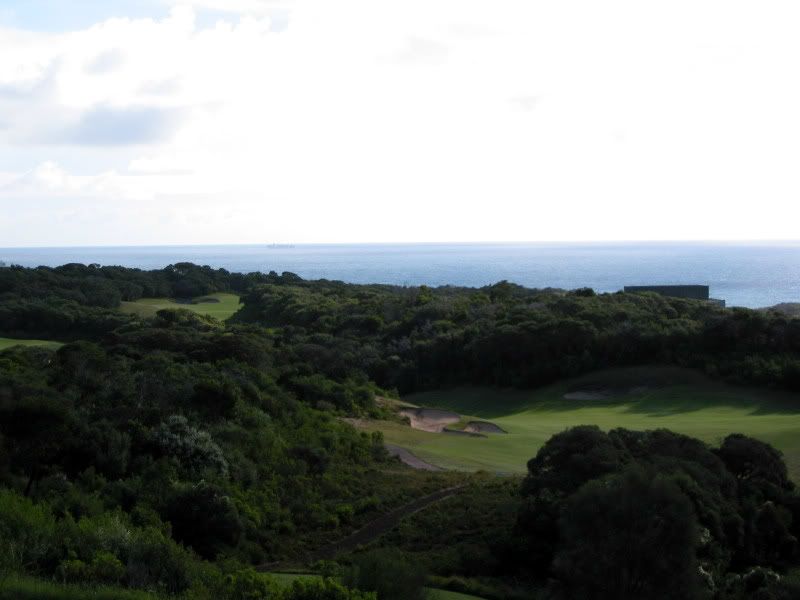
The hole sweeps downhill and to the left, and sits beautifully on the land. Northerly winds and westerly winds literally implore one to open the shoulders, and carry the sand on the inside elbow of the fairway. Carrying the vegetated hill into which the bunkers are cut, comes more and more into play the stronger the aiding breezes and the more courageous (or hopeful) the golfer on the tee. The fairway beyond this hill is blind, and asks for a greater carry the further left one aims. The puzzle consists of knowing one's ability, and also executing to one's ability, after factoring wind, carry and fairway orrientation, not to mention the intimidation presented by the vegetation on the rise. And the blind fairway. Hard to tire of a course when it presents equations such as these repeatedly through the round, especially when it also provides ample visible fairway into which conservative play may be alternatively made. Risk-free play, or strong southerly winds see the hole play as a three shot proposition.
Trajectory control on the drive is important with hurting winds, an exposed tee site, and the elevation difference from tee to fairway. With over 230m to go, it's a matter of plotting a course to the pin as you see fit. Fairway food /wedge? Hybrid and longer third? Maybe mid iron mid iron to some pins for some players? Modes of play on 17 vary significantly among many groups. Various segments of the green are best approached from distinctly different portions of fairway. Heroic drives bring the green well within reach for the second shot. Such an approach is under 200m and looks like this.
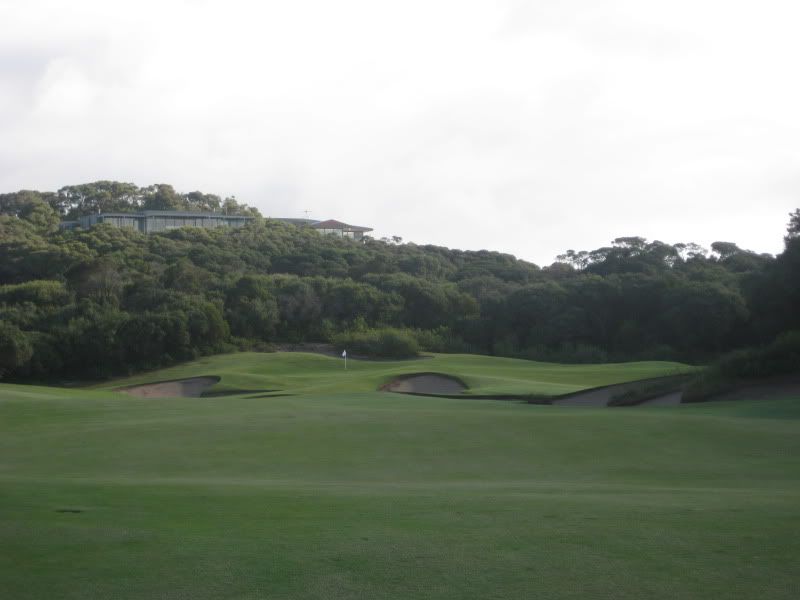
A string of bunkers starts out along the right side of the fairway and meander diagonally to the line of play, sitting through the zone of comfortable sand wedge approach. This gives everyone something to think about on their second or third shot. The space between some of the bunkers is decepitvely large, a point often only appreciated by some as they walk by.
I've always found this green hard to accurately visualise from the fairway. Short iron and wedge approaches are played uphill slightly, and the green front bunker complex dominates the view. As hard as I wrestle on approach, I've never got a good visual lock on the precise shape and dimensions of much of the front right of this green. I expect this is an intended design feature - if so, it's well done, and makes one really sweat on where to leave their second shot, and how best to approach.
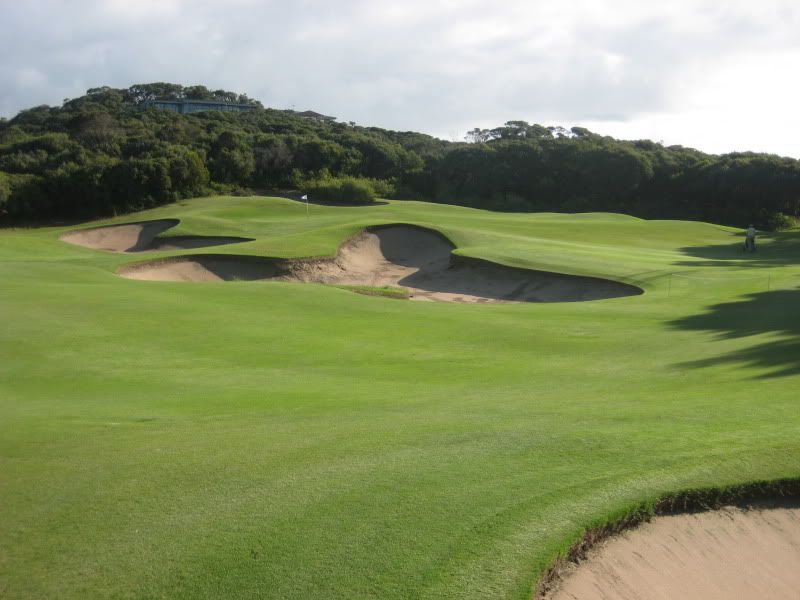
The green features a back right portion of deceptive speed, a delightful little lobe left (with accompanying bunker), and a front right portion characterised by a dominant ridge. Again, putting from one green portion to the next can be scary, and yet an absolute blast, with all manner of angles considered and creative approaches taken to the task. When pinned, the back left portion is a hoot to play, as it demands accuracy on approach, and yields putts of marked speed and break.
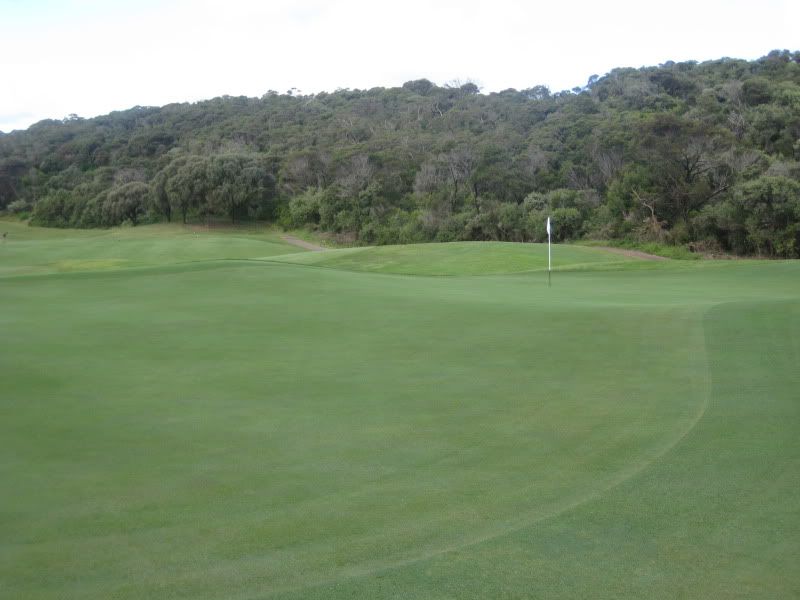
Some of the greenside bunkering here is reminiscent of what we love about the best bunkering on the Sandbelt - formal edges adjacent to the putting surface, blending seamlessly with the native vegetation, to an ill-defined edge at their rear, while preserving playability and function.
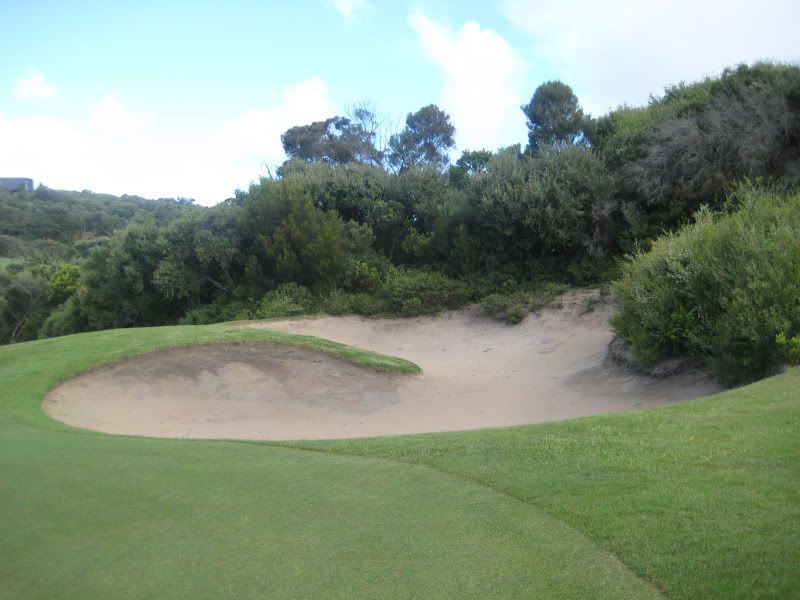
The 17th on National (Old) is another roller coaster of a hole - where score spread can be sizeable. As is the case with so many holes on the layout, the thoughtful or conservative golfers may steadily navigate their way to birdie or par here, yet the adventurer may register anything between 3 and 10. It completes a quartet of engaging, dramatic, sometimes unique yet distinct and enjoyable par 5 holes on the course.
The final hole to come...